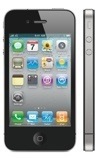Smartphone use continues to rise among both consumer and business segments, according to TNS (http://www.tns-us.com) research group, which has released results compiled from TNS BusinessWave. The study shows the iPhone gaining traction in the enterprise arena.
TNS BusinessWave confirms that smartphones are an increasingly important tool for the business market. The advance of new operating systems, capabilities and mobile applications that improve employee productivity, have resulted in steady growth in the market, particularly within the past year. Smartphones now represent more than half of all handheld wireless devices used by corporate liable wireless users, up 22% from a year ago, while penetration of other wireless phones has declined.
This trend is noted across businesses of all sizes and industries; growth is most rapid among the smallest businesses, but smartphone penetration remains highest among the largest companies. In addition, smartphone penetration is strongest among the manufacturing, wholesale, public administration and finance industries.
Despite the potential for improved efficiencies, many business users rely solely on email and some customer-facing solutions. Larger-scale adoption and use of mobile business applications will depend on perceived value, distribution, platform integration and assessment of technology security and stability. The challenge is for application developers to create mobile application packages that extend business processes and integrate with corporate solutions while demonstrating return-on-investment, says Tom Buehrer, SVP of TNS.
However, smartphones aren’t just for business users anymore. The evolution of mobile technology has fueled rapid consumer adoption of these devices. While not yet reaching levels seen in the business market, they have grown dramatically. TNS syndicated consumer research shows that smartphone penetration among individual liable wireless households is up 36% from just 1-in-4 households in late 2009 to nearly 1-in-3 less than a year later.
According to TNS BusinessWave data, RIM’s BlackBerry remains the leading smartphone operating system, while the iPhone has been the fastest growing. Based on most recent studies, market penetration for RIM’s BlackBerry is 69% across all businesses and increases by size of business to 81% among enterprise companies (businesses with 1,000+ employees).
The iPhone experiences its strongest performance in the small business market (1-4 employees), at 35%, nearly twice its penetration in the overall business sector. Limited distribution as well as restrictions on the applications that can run on the iPhone and concerns about corporate data security may have slowed adoption in large businesses and some industries, says Buehrer.
In the consumer market, RIM’s BlackBerry continues to capture the dominant share among all smartphone owners (37%), although the iPhone is narrowing the gap (28%). Android’s profusion of devices and carriers is evidenced in penetration that has more than tripled since the first quarter of 2010 (from 6% to 19%). Smartphone users differ from other wireless phone users in that they tend to be younger, more highly educated, employed full-time and high income earners. However, there are also differences in the types of users attracted to each specific device.
While BlackBerry users are more likely to have a corporate liable wireless phone and also to be middle-aged professionals in the highest income bracket, Android users are more likely to be younger males, either students or employed in sales, service or a blue collar job, with moderately high incomes. They are also the most ethnically diverse group. iPhone users are also younger, but the most highly educated, employed as a manager or professional and earning more than $100K per year.
As the functionality of smartphone operating systems continues to converge and become more affordable, TNS says more consumers will rely on these devices as an important tool in both their business and personal lives. This proliferation should fuel additional mobile content development and data consumption.
“These market dynamics will create significant opportunities across the mobile ecosystem — from device manufacturers to wireless providers as well as software developers and marketers –but the battle for long-term loyalty is being fought now,” says Buehrer.
TNS BusinessWave a program focusing on the communications usage of more than 20,000 businesses and Request an in-depth view into the telecommunications behavior of more than 120,000 households.

